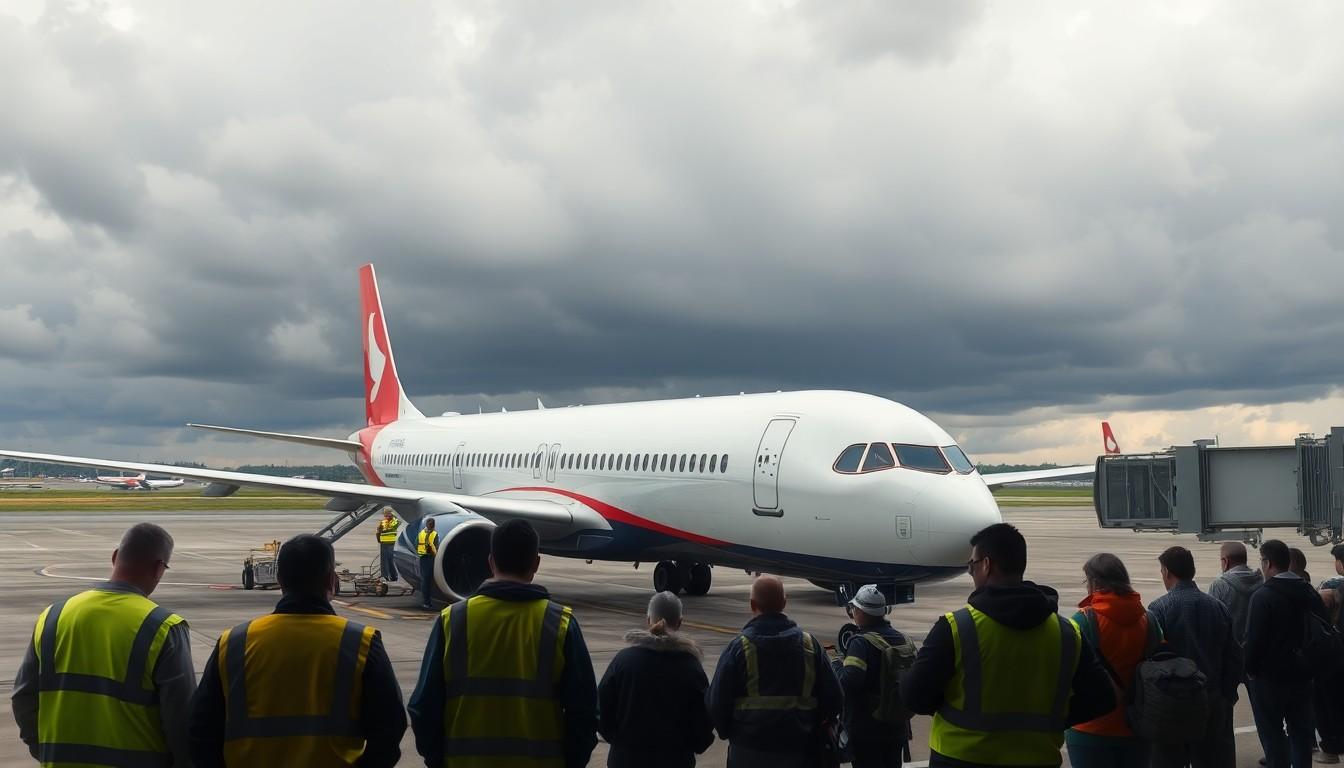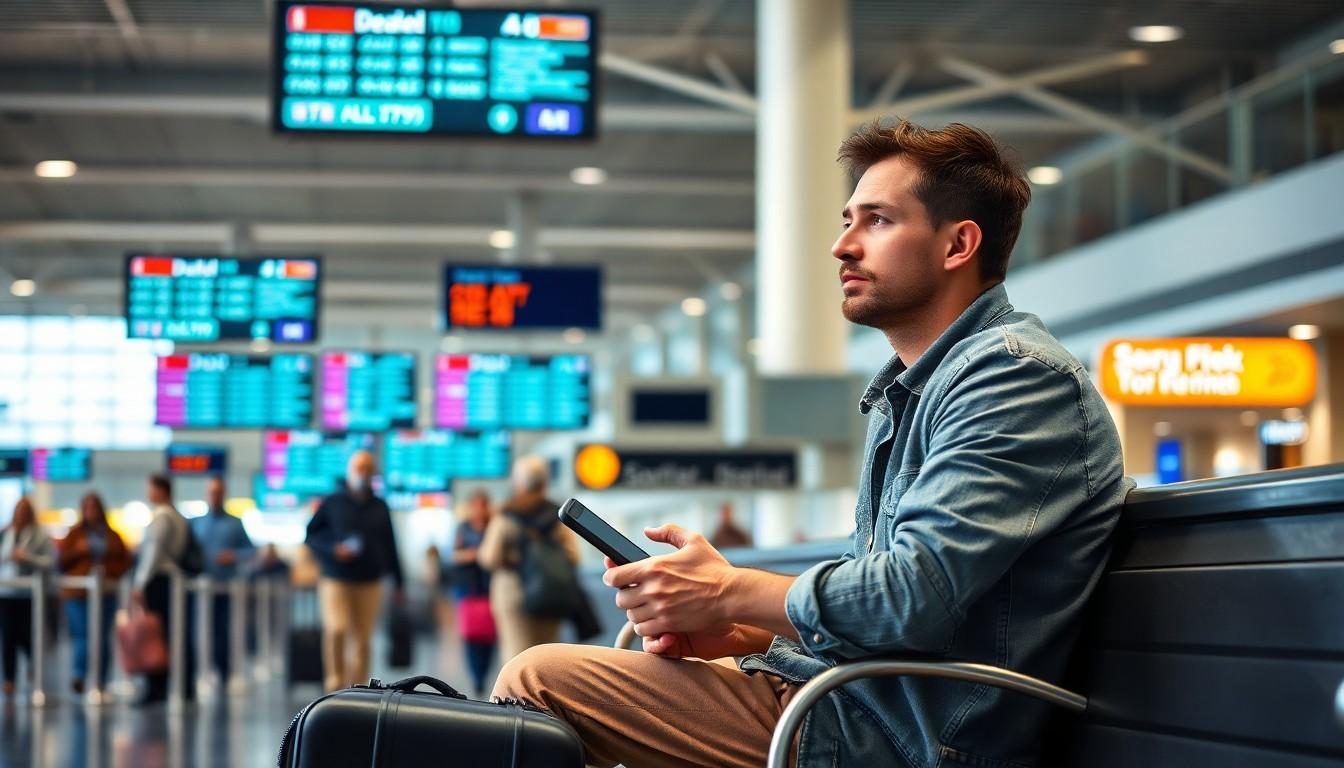When it comes to travel, delays can feel like the universe’s way of reminding us that patience is a virtue—especially when you’re stuck at the airport with a half-eaten sandwich and a questionable magazine. Flight GH5489966 has recently joined the elite club of delayed flights, leaving passengers wondering if their plane took a detour to grab a coffee.
Overview of Flight GH5489966
Flight GH5489966 experiences significant delays, impacting travelers and their schedules. The flight operates from a major airport to a popular destination. Delays often arise due to weather conditions, technical issues, or air traffic control directives.
Passengers on Flight GH5489966 may find themselves navigating the airport with limited options. Entertainment choices frequently dwindle, and food selections become repetitive during long waiting periods. This flight’s delay exemplifies common travel frustrations.
Delays for this flight can last several hours, affecting connecting flights and overall itineraries. According to recent data from the airline, communication regarding delays remains crucial in managing passenger expectations. It’s important for travelers to stay updated through the airline’s app or customer service channels.
Travelers on Flight GH5489966 often experience increased anxiety. Uncertainty about rescheduled departure times can add to the stress. Additionally, some passengers use this time to reach out to family or adjust plans accordingly. Tracking the flight’s status becomes vital in such situations.
Despite the challenges, some passengers make the best of their time at the airport. Social media may serve as an outlet for sharing experiences, while capturing moments at the airport makes for interesting content. Alternative arrangements might be explored as waiting periods extend, allowing travelers to consider other options.
Understanding the dynamics of delays on Flight GH5489966 can enhance the travel experience. Focus on flexibility and proactive communication creates opportunities to minimize frustration during unexpected situations.
Reasons for Delay

Flight GH5489966 experiences delays for various reasons, significantly impacting passenger travel plans. Understanding these factors helps manage expectations.
Technical Issues
Technical issues contribute frequently to flight delays. Aircraft malfunctions or mechanical failures can arise unexpectedly. When maintenance crews identify a problem, safety protocols dictate necessary repairs before departure. Delays from these technical concerns oftentimes range from a few minutes to several hours. Regular inspections help minimize this risk, but occasional issues may still cause significant setbacks.
Weather Conditions
Weather conditions frequently disrupt flight schedules. Heavy rain, snow, or strong winds can hinder takeoffs and landings. When severe weather conditions are present, airlines prioritize passenger safety, leading to necessary adjustments. Airports often remain busy, and adverse weather can impact numerous flights simultaneously. Consequently, passengers may experience extended waiting times as airlines work to reschedule departures.
Air Traffic Control
Air traffic control directives play a crucial role in flight operations. When air traffic is high, controllers manage aircraft movements to ensure safety and efficiency. Delays frequently occur during peak travel times or in response to unforeseen delays in other flights. Coordinating several flights requires careful timing, and any disruptions can create a ripple effect across numerous itineraries. As a result, departures may not align as planned, causing frustration for travelers.
Impact of the Delay
Delays like that of flight GH5489966 significantly affect passengers and airlines alike. Understanding these impacts proves essential to navigating the travel experience.
Passenger Experience
Facing a delay puts passengers in uncomfortable situations. Stuck in the airport, confusion often sets in as travelers juggle rescheduled connections and limited options. Passengers frequently express frustration over unclear information, which heightens anxiety. While some try to make the best of it, they often feel the strain of waiting hours for updates. Families, in particular, struggle to keep children entertained, and their patience may wear thin. Social media becomes an outlet for sharing experiences, allowing them to connect with others in similar situations. Navigating crowded terminals and searching for food also adds to the discomfort. Overall, delays test the resilience of travelers in various ways.
Financial Implications for Airlines
Airlines grapple with substantial financial repercussions due to delays. They face additional costs for staff overtime and accommodate passengers with meals or lodging. Each delayed flight potentially leads to operational inefficiencies that affect the entire schedule. Airlines may incur penalties from airport authorities for failure to adhere to schedules. The impact on customer satisfaction also remains significant, as frustrated passengers might choose alternative carriers for future travel. Furthermore, airlines experience a ripple effect: delays in one flight can cascade, causing multiple flights to fall behind schedule. Effectively managing these delays necessitates strategic planning, upfront communication, and investment in technology to streamline operations.
Mitigation Strategies for Future Delays
Developing robust mitigation strategies can significantly reduce the frequency and impact of flight delays, like those experienced by flight GH5489966. Implementing advanced technology systems helps airlines streamline operations. Predictive analytics enables better forecasting of potential delays due to weather or technical issues.
Investing in staff training plays a crucial role in enhancing communication. Employees equipped with the right skills can effectively manage passenger inquiries and provide timely updates. Well-informed passengers possess greater confidence during unexpected situations, reducing anxiety levels.
Utilizing real-time data sharing systems allows passengers to access immediate updates on flight statuses. When information flows seamlessly, travelers feel more in control of their plans. Frequent communication about potential delays helps set expectations and keeps travelers engaged.
Incorporating flexibility into scheduling can address sudden disruptions. Airlines adopting contingency plans more readily adapt to changing circumstances. Alternative routing options often mitigate the effect of delays and improve overall travel efficiency.
Prioritizing passenger comfort during wait times is essential. Offering enhanced airport amenities, such as lounges with food and entertainment options, significantly improves the travel experience. Access to comfortable waiting areas allows passengers to relax, making delays more manageable.
Engaging in partnerships with airports and other airlines can provide cooperative solutions during peak times. Collaborating on scheduling and traffic management ensures better use of shared resources. Engaging customers through social media enables airlines to maintain positive relationships and gather feedback.
Collectively, these mitigation strategies enhance overall travel experiences and minimize the frustrations linked to delays. Travelers gain valuable insights into potential solutions, establishing a more resilient travel environment for the future.
Conclusion
Flight delays like GH5489966 can be incredibly frustrating for travelers. The impact of these delays extends beyond mere inconvenience, affecting itineraries and increasing anxiety among passengers. While airlines face financial repercussions and operational challenges, the focus must shift towards improving communication and enhancing passenger experiences during these trying times.
By adopting advanced technologies and flexible scheduling, airlines can better manage delays and minimize their effects. Investing in passenger comfort and proactive communication can transform the airport experience, turning a frustrating wait into a more manageable situation. As the travel industry evolves, prioritizing these strategies will not only benefit airlines but also create a more resilient travel environment for everyone involved.

